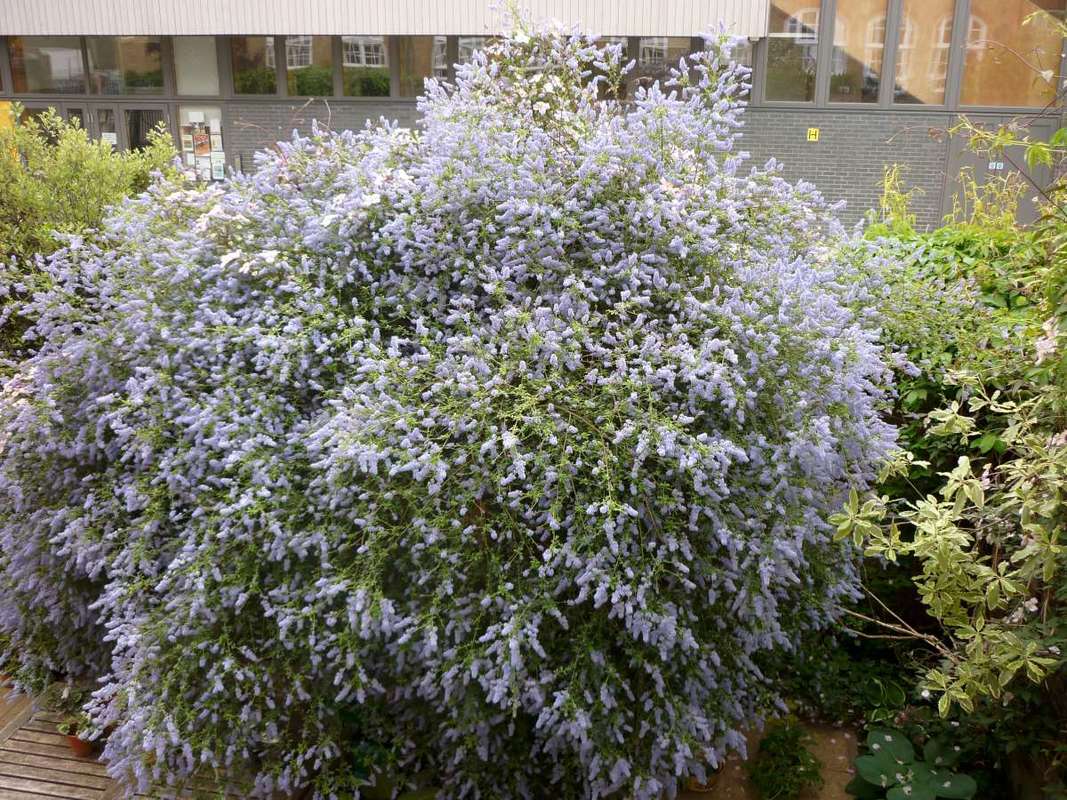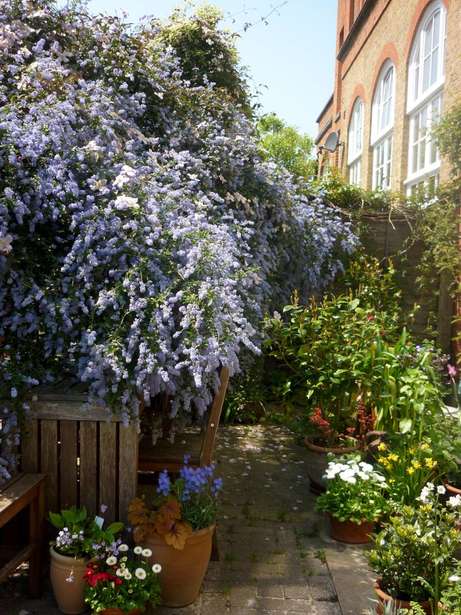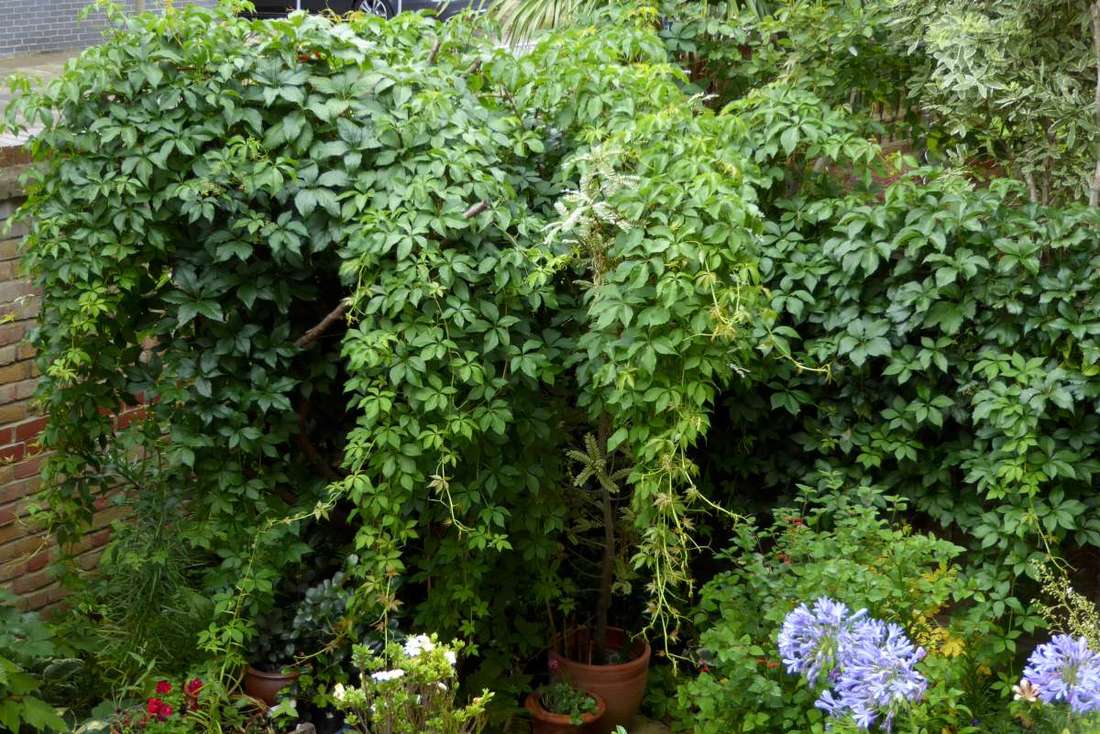As I mentioned two posts or so ago, we will be moving home soon. And while it is still undecided whether we'll sell the place or rent it out, we will have to spruce it up a bit. Part of this was the removal, finally, of the dead trunks of a large Ceanothus which we had inherited as a fully grown, mature specimen but which met its end about 3 or 4 years ago. It had turned into an amazing blue cascade of flowers each May - after which I regularly had to cut it back since it threatened to swallow half the garden, including the table and seats.
Again, not a treatment that is the norm but with toddlers around who I feared would otherwise poke their eyes out if they crawled underneath it, I had little option. Besides, I hated the "only green on the outside-surface" look and resented its taking up ever more of our very limited space. It resulted in a lovely hidey-hole: bows of fresh shoots overhanging the patio's paving slabs almost to the ground, providing a green cover behind which we'd have many a "secret" teddy bears' picnic...
Then one year we woke to find a wet blanket of snow not just covering everything in the garden, but its weight on the evergreen leaf-cover had actually caused the main trunk to split, with one part of it leaning low at an unnatural angle near the ground. While we tried to "fix" it, the shrub never recovered or regained its strength and after a few more wet seasons - made more of an issue by our gardening on near-solid clay which traps the water - this native of dry, sunny Califonian climes had had enough.
After the clematis had gone, too, its triumphant and jubilant long-time rival Parthenocissus took advantage and quickly -over, too. We liked the curtains of hanging vines in summer and how the leaves set aflame our garden each autumn as they turned bright red and yellow, so put up with the ugly bare stilts of the dead Ceanothus' trunks over the winter months and into spring which provided it with a pergola-like framework.
Laziness probably played a part, too: I dreaded having to extract the thick, extended roots in a tightly planted-up space if I wanted to replace it. However, I always knew I wanted a cherry or an apple tree there instead. Not a proper fruiter but an ornamental version - for blossom and autumn colour. So it was going to be either a crabapple or an ornamental cherry. In the end, fruit colour and considerations for the birds (food!) won over the all-too-fleeting beauty of colour from autumn leaves and the decision fell in favour of the crabapple.
From what I can tell without having seen it throughout the year, its main difference to "Red Sentinel" is going to be the size of fruit and perhaps how well the latter lasts: "Red Sentinel"s fruit seems to grow to only half the size of that of "Gorgeous" but in much bigger profusion. It may also last longer into winter. Both of which I would have preferred - the "doll's house-sized fruit" appealing more than the larger, "useful" size advertised as "great for jellies". Then again "Gorgeous" appears to additionally offer a bit of a show before it drops its leaves in autumn and perhaps greater resistance to diseases.
So, on a late afternoon soon after, I got my daughter to write a few lines on a piece of paper which, together with a shiny new coin, we put in the yellow plastic capsule of a Kinder Surprise-egg and then buried it at the bottom of the hole we dug for our tree. Nothing like a bit of romance...
I did not add extra manure or fill the hole with compost, only adding a little of spent multi-purpose compost to break up the clay a bit. I did not want the tree to have a boost first, only for it to falter when its roots hit the "hard reality" of the clay surrounding the pit. It's early days, of course, but so far it looks very happy and has set many fruit. Inevitably, the greenflies have found its young shoots but, like the rosebush, it seems well able to cope. May it live to grow old and bring much joy to whoever is going to live here after we've left!




 RSS Feed
RSS Feed